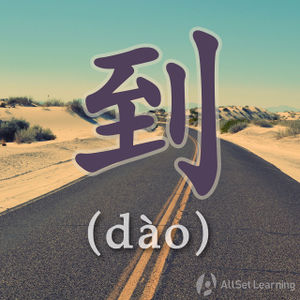Difference between revisions of "Result complements "-dao" and "-jian""
(→Books) |
|||
| Line 54: | Line 54: | ||
* [[Short-term Spoken Chinese: Threshold Vol. 2 (汉语口语入门篇下)]] (pp. 92) [http://www.amazon.com/gp/product/7561913656/ref%3das_li_ss_tl?ie=UTF8&tag=allset-20&linkCode=as2&camp=217145&creative=399369&creativeASIN=7561913656 →buy] | * [[Short-term Spoken Chinese: Threshold Vol. 2 (汉语口语入门篇下)]] (pp. 92) [http://www.amazon.com/gp/product/7561913656/ref%3das_li_ss_tl?ie=UTF8&tag=allset-20&linkCode=as2&camp=217145&creative=399369&creativeASIN=7561913656 →buy] | ||
* [[Basic Patterns of Chinese Grammar]] (pp. 109) [http://www.amazon.com/gp/product/1933330899/ref=as_li_ss_tl?ie=UTF8&tag=allset-20&linkCode=as2&camp=217145&creative=399373&creativeASIN=1933330899 →buy] | * [[Basic Patterns of Chinese Grammar]] (pp. 109) [http://www.amazon.com/gp/product/1933330899/ref=as_li_ss_tl?ie=UTF8&tag=allset-20&linkCode=as2&camp=217145&creative=399373&creativeASIN=1933330899 →buy] | ||
| + | *[[40 Lessons for Basic Chinese Course (基础汉语40课上册)]] (pp. 205-6)[http://www.amazon.com/gp/product/B001FTL8D8/ref=as_li_ss_tl?ie=UTF8&camp=1789&creative=390957&creativeASIN=B001FTL8D8&linkCode=as2&tag=allset-20 →buy] | ||
| + | |||
{{Basic Grammar|到|B1|V + 到 / 见|听 <em>到</em> 了 吗?|grammar point|ASGWNGEP}} | {{Basic Grammar|到|B1|V + 到 / 见|听 <em>到</em> 了 吗?|grammar point|ASGWNGEP}} | ||
{{Rel char|见}} | {{Rel char|见}} | ||
Revision as of 06:00, 8 July 2013
-
Level
-
Similar to
-
Used for
-
Keywords
Two of the most common result complements in Chinese are 到 and 见. Both can be used in similar statements.
Structure
Result complements are a huge topic in Chinese grammar, but you can approach them in stages. The structure you come across the most is a verb with 到 (dào):
Subject + Verb + 到 + Object
What 到 does is indicate that the outcome of the verb is achieved - what its result is. Without a result complement, the sentence would describe only the action itself. To illustrate, 想 "to think" is the action of thinking, whereas 想到 "to think (of something)" is a the result of that process.
The complement 见 is very similar to 到, and it is used in the same way:
Subject + Verb + 见 + Object
However, 见 is generally only used after verbs involving sense, like 听 and 看, whereas 到 can be attached to a large variety of verbs.
Examples
- 听 到 了 吗?Did you hear it?
- 你 看 见 那 个 人 了 吗?Did you see that person?
- 我 买 到 了 一 些 水果。I bought some fruit.
- 小 时候 没 学过 乐器, 我 感到 很 遗憾。When I was younger, I didn't learn how to play an instrument. Now I regret it.
- 你 的 手机 号码 里 怎么 有 那么 多 个 八?没 想 到 你 那么 迷信!Why does your phone number have so many 8's? I didn't think you were so suspicious!
As in the last sentence, this structure can be negated using 没.
See also
Sources and further reading
Books
- Short-term Spoken Chinese: Threshold Vol. 2 (汉语口语入门篇下) (pp. 92) →buy
- Basic Patterns of Chinese Grammar (pp. 109) →buy
- 40 Lessons for Basic Chinese Course (基础汉语40课上册) (pp. 205-6)→buy



